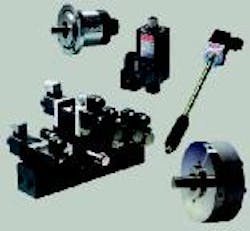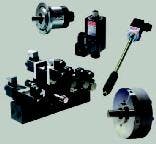Pumps, valves
A range of standard pumps includes axial piston pumps noted for their small size, high speed, and efficiency; radial piston pumps that can handle continuous operating pressures to 1,000 bar/15,000 psi; and pumps that can be combined with a gear pump. A line of valves includes seated, pressure, flow, and shutoff types. They can operate with pressures to 700 bar/10,000 psi, and are direct-operated, stackable, and leak-free. Subplates and other accessories are also available.
Bieri Hydraulik,
+41 (31) 970 09 09,
www.bierihydraulik.com


